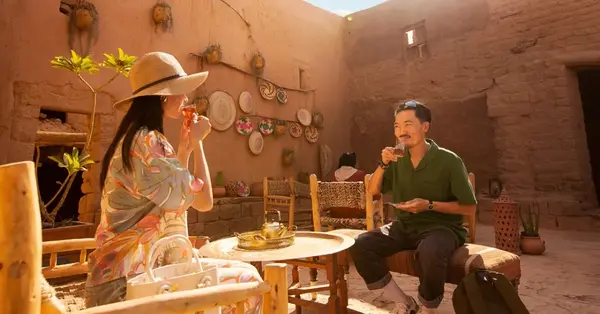You are viewing 1 of your 2 free articles
UNESCO announces 34 new world heritage sites
The United Nations Educational, Scientific and Cultural Organisation (UNESCO) has announced 34 newly inscribed sites treasured for their outstanding universal value
The committee that decides which sites are UNESCO-listed didn't meet in 2020 because of the Covid-19 pandemic, so the new list is longer than usual. Once a site is added, it is entitled to funds and advice on ways to maintain it.
Only five of the new sites are natural, while the rest are cherished for their cultural value.
This year's list saw the inclusion of the Hima rock art complex in Saudi Arabia (pictured). The site is the sixth to be recognised in the country, joining the Al-Ahsa Oasis, Historic Jeddah, At-Turaif district in ad-Dir'iyah north-west of Riyadh, Al-Hijr Archaeological Site and rock art in the Hail Region.
FOR MORE NEWS YOU CAN USE, SIGN UP FOR CONNECTING TRAVEL'S WEEKLY BULLETIN
Saudi Arabia has forged close links with UNESCO. In 2019, the kingdom was elected to the global heritage body's executive board and in the same year, the Saudi Minister of Culture, Prince Badr bin Abdullah bin Farhan Al Saud, and UNESCO director-general Audrey Azoulay, signed a letter of intent confirming Saudi Arabia's US$25m contribution to Unesco's heritage preservation initiatives.
Other new additions to Unesco's World Heritage list in the region include As-Salt, Jordan, Trans-Iranian Railway, Iran, Cultural Landscape of Hawraman/Uramanat and Iranand Arslantepe Mound, Turkey.
The remaining additions from other regions are listed below:
Europe
- The Great Spa Towns of Europe, Austria, Belgium, Czechia, France, Germany, Italy, United Kingdom
Colonies of Benevolence, Belgium/the Netherlands
Cordouan Lighthouse, France
Nice, Winter Resort Town of the Riviera, France
Mathildenhöhe Darmstadt, Germany
Frontiers of the Roman Empire: The Lower German Lines, Germany, the Netherlands
Frontiers of the Roman Empire: The Danube Limes (Western Segment), Austria, Germany, Slovakia
ShUM Sites of Speyer, Worms and Mainz, Germany
The Porticoes of Bologna, Italy
The Works of Jože Plečnik in Ljubljana: Human Centered Urban Design, Slovenia
The Slate Landscape of Northwest Wales, United Kingdom
Petroglyphs of Lake Onega and the White Sea, Russia
Padua's 14th Century Fresco Cycles, Italy
Paseo del Prado and Buen Retiro, a landscape of Arts and Sciences, Spain
Roșia Montană Mining Landscape, Romania
Colchic Rainforests and Wetlands, Georgia
Bath, England
Asia
Jomon Prehistoric Sites in northern Japan
Quanzhou: Emporium of the World in Song-Yuan China
Amami-Oshima Island, Tokunoshima Island, the northern part of Okinawa Island and Iriomote Island, Japan
Getbol, Korean Tidal Flats, South Korea
Kaeng Krachan Forest Complex, Thailand
Dholavira: a Harappan City, India
Kakatiya Rudreshwara (Ramappa) Temple, Telangana, India
Jomon, Japan
South America
Sítio Roberto Burle Marx, Brazil
Settlement and Artificial Mummification of the Chinchorro Culture in the Arica and Parinacota Region, Chile
Chankillo Archaeoastronomical Complex, Peru
The Work of Engineer Eladio Dieste: Church of Atlántida, Uruguay
Sítio Roberto Burle Marx, Brazil
Africa
Ivindo National Park, Gabon
Sudanese Style Mosques, Ivory Coast
Ivindo National Park, Gabon
For more information, visit www.whc.unesco.org

















